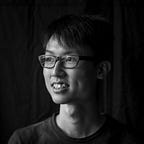UX Job Interview Guide: Screening interview
Introduction
This interview guide is here to help you:
- Understand the various stages of UX interview process and what they’re about.
- Give you a list of questions you might face at each step, along with some examples of good answers.
Interview Process
A UX design interview process typically unfolds in 3 key stages:
- Screening interview
- Hiring manager interview
- UX panel interview
In this article we will cover the screening interview, the rest will be covered in the subsequent articles in this series.
Screening interview
The goal of the screening interview is for:
Recruiter: To evaluate your suitability for the position based on:
- Relevant work experience, covering industry, platform design (e.g., app, web-app), and skillsets
- Your interest in the role and career aspirations
- Understanding of the design process
- Experience and skills in collaboration
You: To gain a clearer understanding of the role based on the job description to determine if it’s worth pursuing.
Duration
Typically 30 minutes
Mode
Remote video calls or voice calls
What to Expect
Introduction
Provide a brief overview of yourself, emphasising relevant experience that aligns with the job description.
- Question: Tell me about yourself?
- How to Answer: Present a chronological overview of your past experiences, starting with impactful achievements. Highlight key skills and work experiences sought by the recruiter.
- Example: In organization X, I spearheaded the launch of a new product from inception to onboarding our initial 1000 customers (impact). My involvement spanned research, implementation, user research, collaboration with the product manager for feature scoping, design concept creation, prototyping, and user testing (skills) for a hybrid mobile app (relevant experience). Additionally, I initiated and maintained the design system (skills/relevant experience), working collaboratively in an agile and sprint manner with developers to implement the design (relevant experience).
Company Background
Demonstrate your level of interest by showcasing your research efforts about the company.
- Question: What do you know about us?
- How to Answer: Ensure you answer the following key aspects about the company:
(a) Company: Industry, year founded, locations, funding stage, future plans
(b) Products: Offered services or products, target audience, value proposition - Example: Company X is an automobile management platform provider founded in 2015, currently operating across Singapore, Malaysia, Australia. They offer an all-in-one used car marketplace with a focus on contactless purchase, car loans, insurance, and after-sales services, including car maintenance. The company is currently in a corporate funding round and aims for an IPO in 12 months.
Screening Questions
The recruiter will pose questions to gauge your suitability. Common questions include:
Interest and Motivation:
- Why do you want to work here?
Career Aspiration:
- Where do you see yourself in the next 5 years?
Past Project Experiences:
- Describe a recent challenging project and your approach (use STAR framework to structure your answer: Situation, Task, Action, Result).
- How have you collaborated with cross-functional roles, such as product managers and developers, in the past?
Understanding of Design, Process, and Challenges:
- What are the differences between UI and UX?
- Describe your design process and the methods you follow.
- What are some significant challenges you’ve faced as a UX designer? (use CARL framework to structure your answer: Context, Action, Result, Learning)
Salary
Address your salary expectations and assess whether it aligns with the company’s offer.
- How to Answer: Provide a range (e.g., 10–20% increase of current salary).
- Example: For instance, if your current salary is $4000, state an expected range of $4000-$4800. Ensure you’ve researched the typical salary range; otherwise, a general 10–20% increment from your current salary is a good benchmark.
Questions for Clarification
Utilise this opportunity to ask questions about the role’s specifics and determine if it’s worth proceeding to the next interview stage.
- Product: If I am hired, what product will I be working on?
- Team Structure: Who will I be working with? How big is the team, and what functions are there?
- Culture Fit: How would you describe the company culture? What is the one thing you value the most?
Summary
- In the UX interview, there are three stages: screening, hiring manager, and UX panel interview.
- Recruiters assess your interest, experience, design knowledge, and collaboration skills. Your aim is to gain a better understanding of the role.
- Tips include articulating your experiences effectively, demonstrating your knowledge of the company, adeptly addressing common questions, discussing salary thoughtfully, and inquiring about the role.
